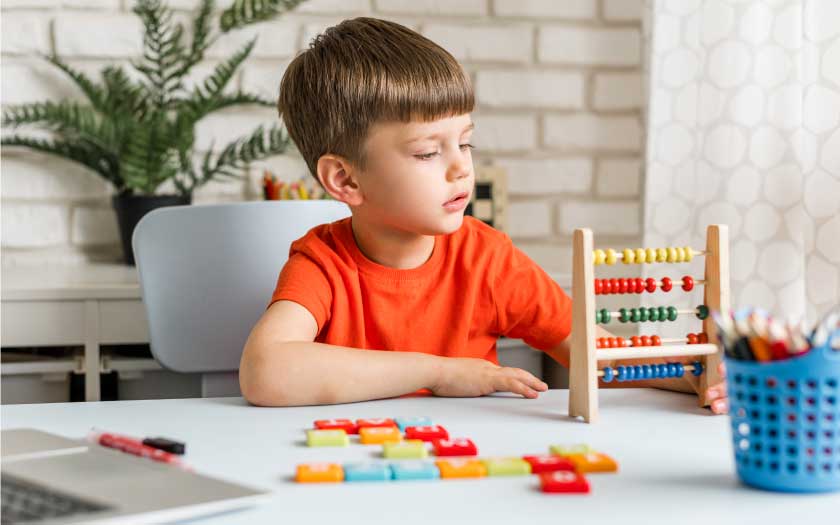Children see, children do (or pretend to!), and it’s a sign of a healthy imagination. Read on…
If you spend time around a small child, chances are you’ll be able to witness how well his or her imagination works — e.g. moving a toy block along as if it’s a car or pretending to be a doctor treating a doll as the sick patient. As ‘simple’ as those actions may seem to you, that child is actually:
- Using an object to represent something else
- Giving that object motion and action
From an adult’s point of view, pretend play may not seem like a big deal, but for an innocent little child, the mere act of pretending builds skills in a number of essential developmental areas, one of them being the ability to be in someone else’s shoes. Children who engage in lots of pretend play are also, in their way, experimenting with the social and emotional roles of life.
As a child begins to meet other children and play with them, he or she will learn how to take turns, share toys, play together, and creatively solve problems as well. This is when the ‘empathy’ they’ve been busy building by themselves during pretend play will come in handy and with the help of their parents or caregivers, they’ll be better able to understand the feelings of others.
More than just kiddie play
A child lost in pretend play may not seem to be paying that much attention to what he’s doing, but in reality, he is symbolically transforming objects and actions as well as engaging in interactive social dialogue and negotiation. Because it pretends to play, it inevitably involves role-taking, making things up as the plot is in play, and lots of improvisation too. Many cognitive strategies are exhibited during pretend play, such as joint planning, negotiation, problem-solving, and goal-seeking.
Encourages thinking and problem solving
Pretend, whether it’s alone or among two or more children, provides little ones with opportunities to think about how to solve problems.
For example, two kids who want to play the same role in a role play may have to come to an understanding as to who plays what. Or, a child has to search for the right material to build a make-believe boat for him to sail through shark-infested waters with his mates (read: doll, teddy bears, figurines, etc). In cases like these, they’ll have to use their cognitive thinking skills, the very same skills that will help them solve problems later on in their lives.
Nurtures language skills
If you listen carefully to some of the things your child is saying during his next playgroup session, or even as he plays by himself, you’d probably notice a few words or even phrases you never knew he knew! These are mostly what he has heard around him, either from you, from TV programs, a daycare provider, teacher, etc. Little kids love to imitate and pretend play helps them nurture their language skills.
Pretend play provides them opportunities to reenact what they have seen or heard, using new words.
Learning about themselves and the world
Pretend play can sometimes turn dramatic, and these play experiences are some of the first ways children learn about their likes and dislikes, their interests, and their abilities.
During pretend play, little ones get to experiment and work out situations to make sense out of what they’ve observed. Just watch children playing with dolls to see examples of this, either when the child is in action or just sitting quietly contemplating the next move. Often enough, children use dolls to play the role of themselves to express new ideas and feelings.
Benefits of pretend play to a child
A child who partakes in pretend play is busy sharpening some invaluable skills which include a healthy imagination, problem-solving, critical thinking, and self-expression.
Nurture that imagination!
Parents can do their part in nurturing their little ones’ imagination by providing ample opportunities for imaginative play at home. Ensure that junior’s playthings include the following objects to help spark off some playful imagination:
- Material suitable for creating a ‘home’ or building: Large, empty boxes or oversized plastic crates
- Material for dress-ups: Old clothes, scarves, footwear, assorted hats, and bags
- Material for ‘office’ play: Toy phones, child-friendly stationery, phone books, magazines
- Material for restaurant or kitchen play: Cooking utensils, dishes, plastic food containers, table cloth, napkins, plastic vase with flowers, etc.
- “Actors” such as stuffed animals and dolls of all sizes
- Fabric pieces, blankets, or old sheets for making tents, camps, etc.

If you’ve ever seen little ones play doctor, you would have seen scenes of the ‘doctor’ with a stethoscope, or ‘patients’ taking their medicine, getting their injections, etc. It’s a child’s unique way of exploring scary or uncomfortable situations. You may also notice the little one taking up additional roles, such as a parent comforting a sick child. Through this role plays, children become more comfortable and prepared for life events in a safe way.
Let them take their time
Nothing much comes close to the benefits of uninterrupted time to play and explore ideas as in pretend play. However, it may take more than half an hour playtime allocated for a child. If you feel your child isn’t done yet with the ‘scene’ in the living room, try letting it be for a while so that junior can continue playing at a more appropriate time.



